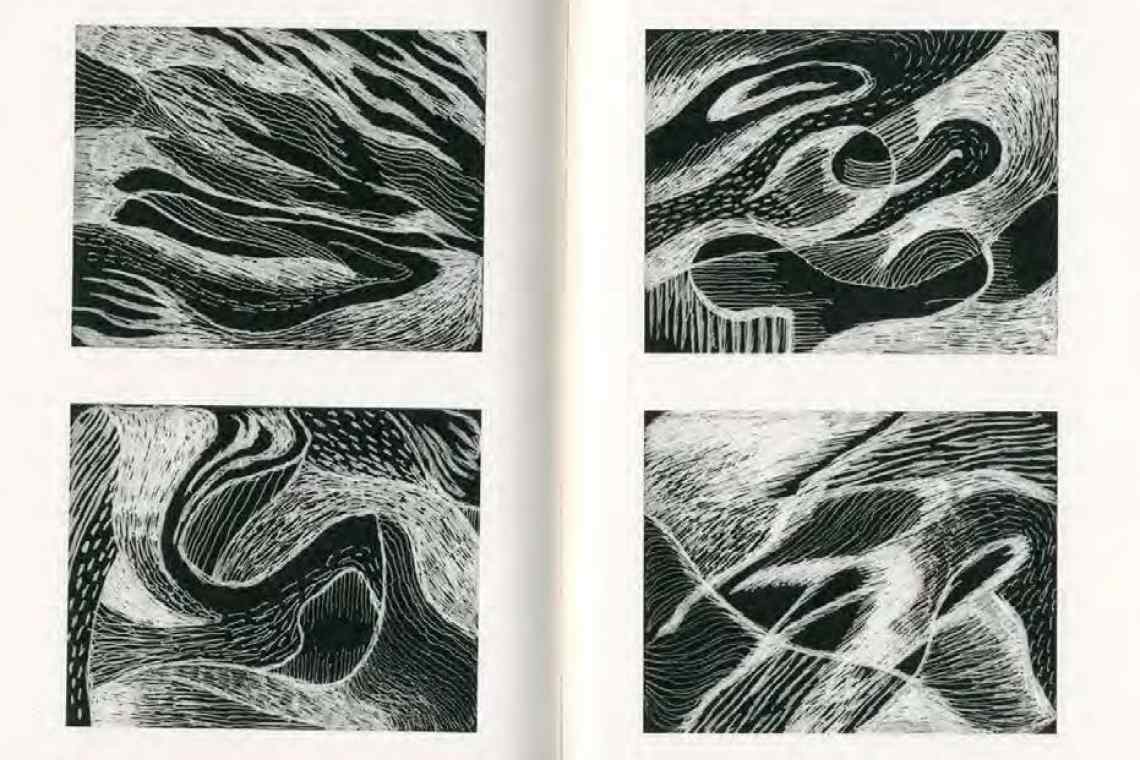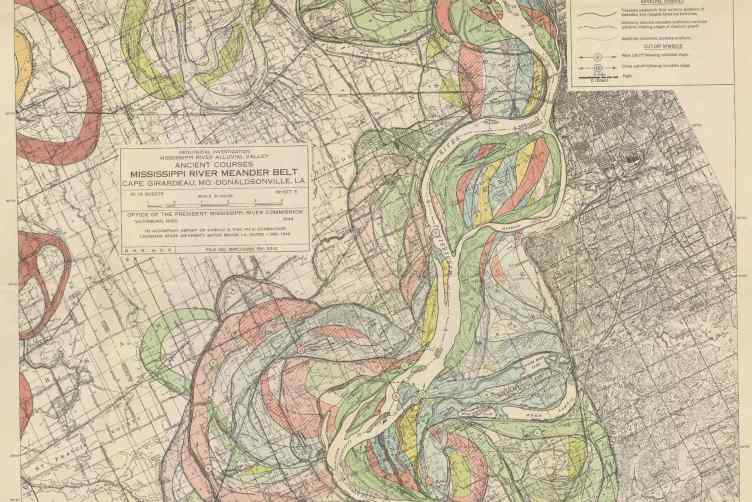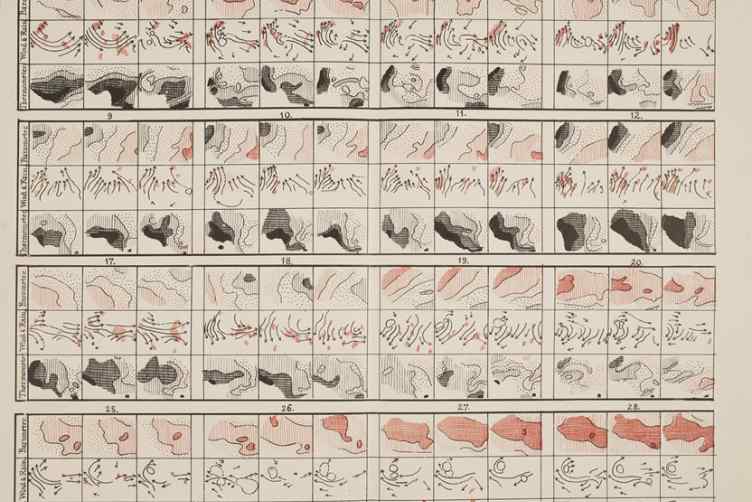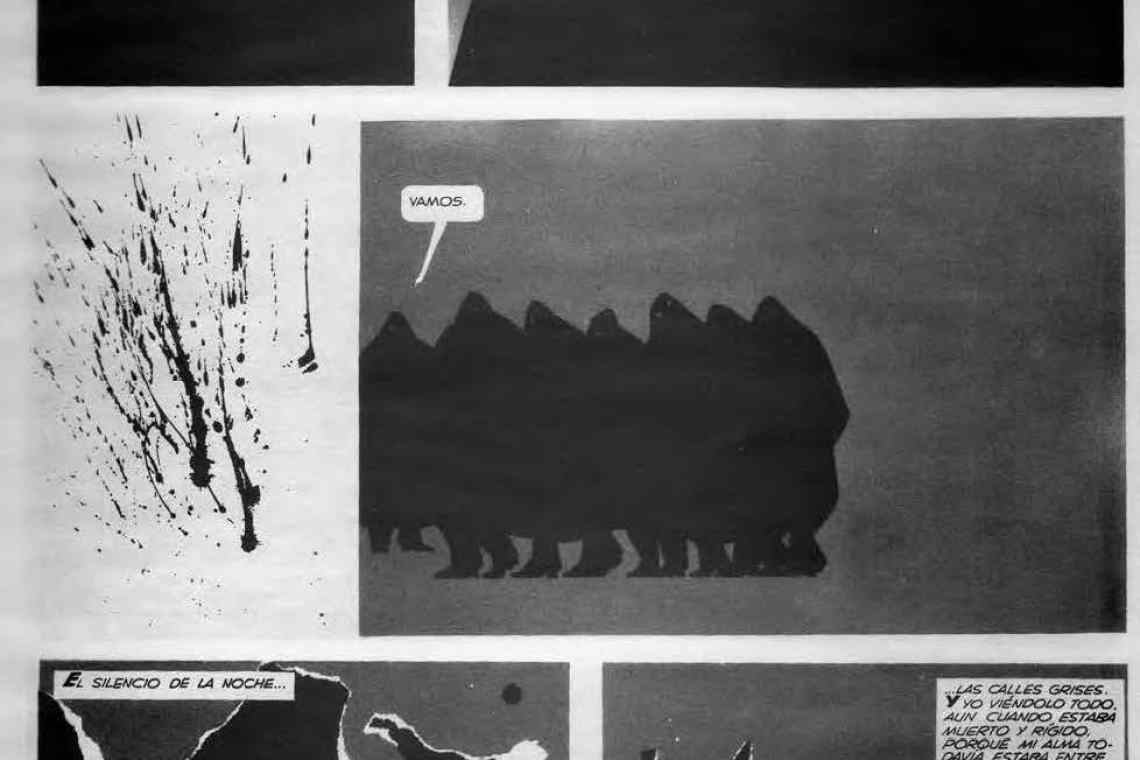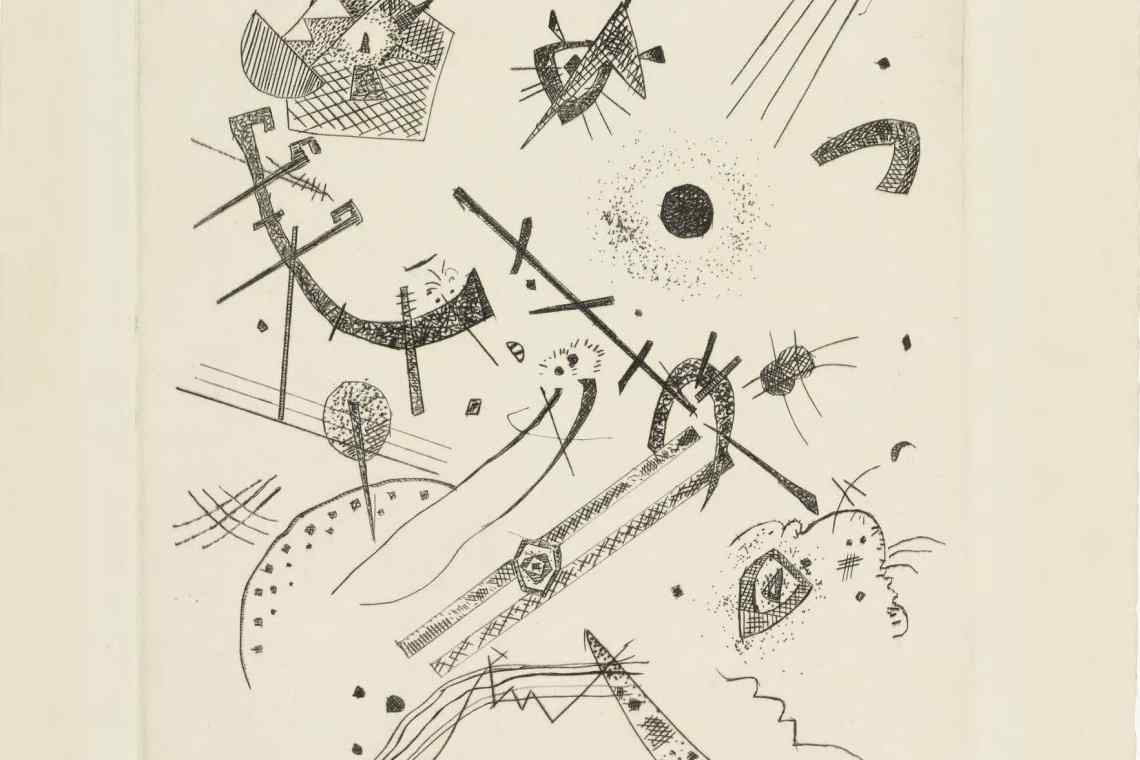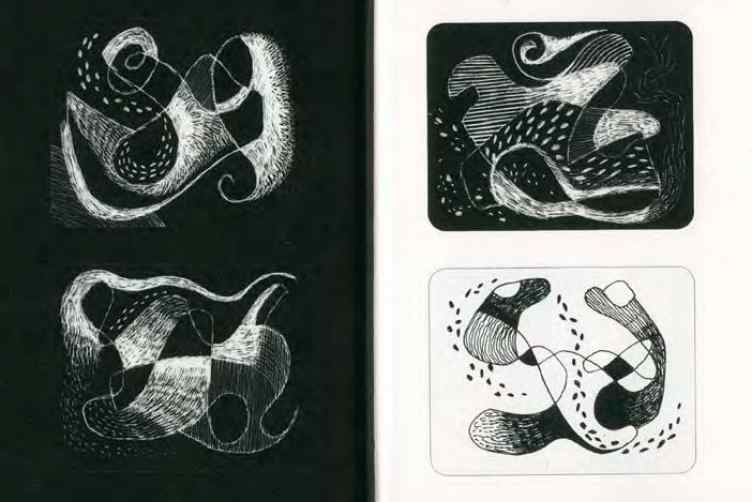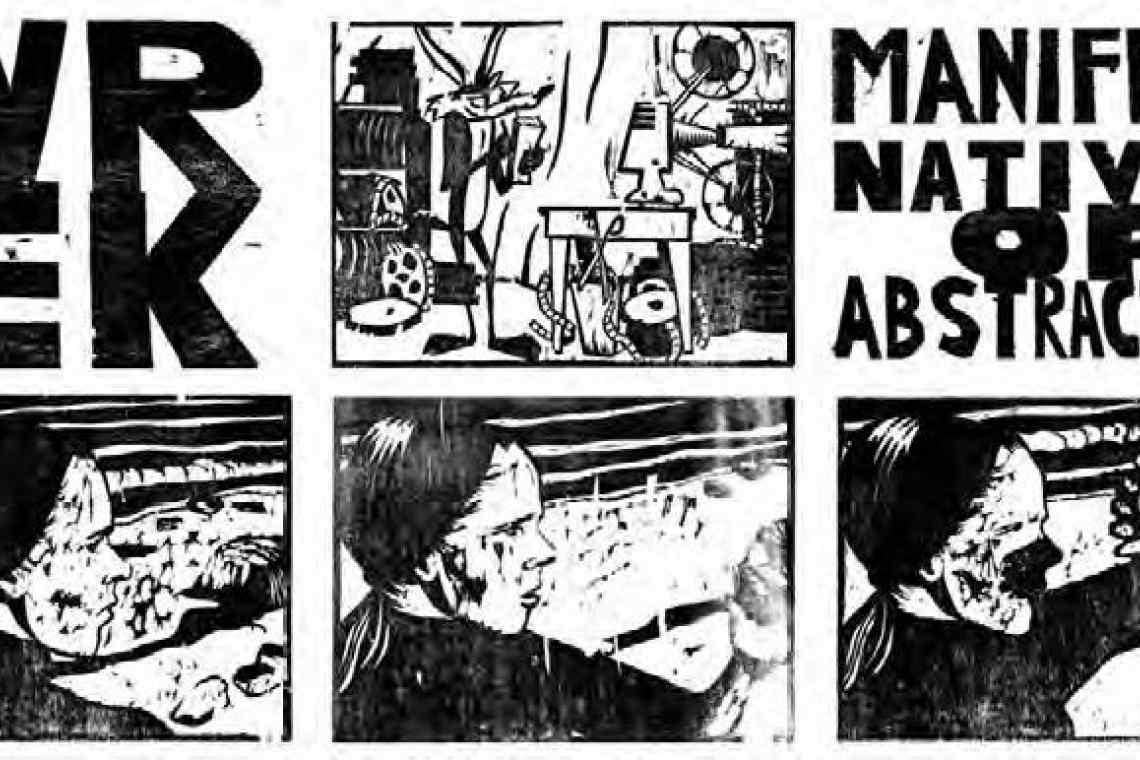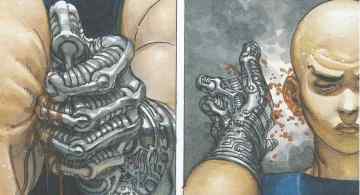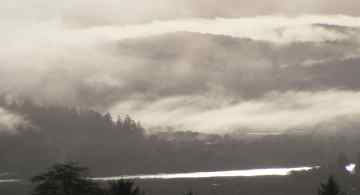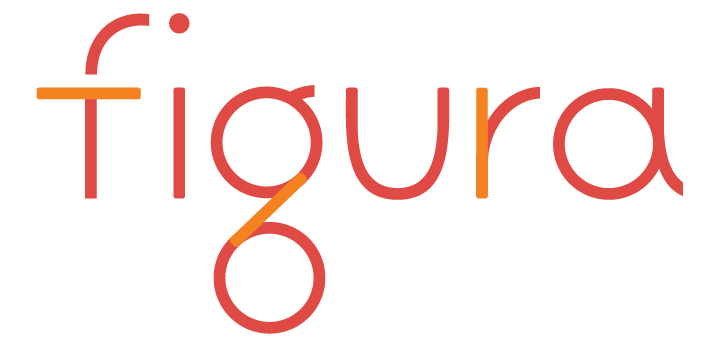Some comics show a sensitivity to “deep time” and the conception of our current epoch as the so-called “Anthropocene”, the latter intimating how one day humans will have become fossils, enigmatic remnants attesting to an ancient life form whose presence can be deduced from its geological inscription (literally its “carbon footprint”)1. This grand narrative of a non-human geological “deep future” resounds with irony. In a dark Copernican twist, Man has become the measure of all self-destruction after having unleashed forces out of its control, changing the planetary ecosystem to the point of self-extinction, with climate change being its main symptom. The current dominance of the post-apocalyptic imaginary testifies to the disquieting pleasure of imagining our end, time and time again, in a kind of narcissistic meditation (mindfulness?) exercise on the Romantic abyss staring back: the face of the zombie is perhaps the best emblem of life returning to a vegetative, even mineral, state of equilibrium (the “death drive” as ultimate climate justice?).
Rather than explore the genre of “post-apocalyptic” comics, those eco-conscious, secular retellings of Judeo-Christian cataclysmic teleology, I will take a closer look at works that interweave thematics and style. More specifically, my concern is the tension between the intimacy of “graphiation” (Marion, 1993) and vast, inhuman timescapes that undermine the comfort of our temporary suspension of disbelief. This essay explores how certain material practices in comics entwine human experiential time with geological time. The time of reading and drawing becomes implicated in anti-human deep time (and vice versa), and it is the incommensurability of these two temporalities that is played out in the works I will examine. This entails that what will be highlighted is the modularity of comics, which allows for a more abstract relationality than a linear deciphering of the story. An adaptation of Thierry Groensteen’s notion of “braiding” (tressage) (2007; 2013), “modularity” simply refers to the endless chains of recombination across panels and pages, an algorithmic logic that occasions multiple readings. Meteorologias (Meteorologies) by Diniz Conefrey (2016), and Alberto Breccia and Carlos Trillo’s “Donde suben y bajan las mareas” (1978) — an adaptation of Lord Dunsany’s “Where the Tides Ebb and Flow” — are the two case studies of this contribution.
Lastly, the related issue of precarity will be touched upon. Against the backdrop of ecological change stands the figure of the human as precarious being, devoured by today’s sleepless 24/7 capitalism (Crary, 2013), supposedly helpless in the face of the ongoing disaster. I will end this contribution by presenting the artistic collective WREK as driven by a generous, anti-austerity logic that allows for a way of thinking outside the dictates of the grand narrative of the Anthropocene.
Redrawing the Visual Rhetoric of the Anthropocene
Diniz Conefrey’s Meteorologias is an abstract comic in small format published in 2016. The comic consists of four stories or episodes, with the titles “Membrana Fóssil” (Fossil Membrane), “Pequenos Mundos” (Small Worlds), “A Matéria do Vento” (Wind Substance), and “Tornado a Casa” (Home Tornado). Though wordless, the comic uses common narrative techniques while evacuating recognizable shapes and figures. Like other abstract comics, it can be read as a reflection on the medium itself, exploiting “[p]anel rhythm, page layout, the sequential potential of color and the panel-to-panel play of abstract shapes […] to create potent formal dramas and narrative arcs” (Molotiu, 2009: n.p.).
As a “formal drama”, Meteorologias couples the architecture of panel and page breakdown with distinctive changes in drawing styles to reflect on time and rhythm. The shifting style of the drawings, the panel sequencing, and the page layout occasion a reflection on multiple interwoven temporalities: the duration and varying cadences of reading, the speed and intensities of drawing, as well as the relation between historical human-scale time and deep anti-human geological time. Except for the three-panel pages in the opening story “Fossil Membrane”, the individual pages establish a regular two-step beat. In fact, the facing pages are like a large white ground against which four smaller canvases are placed, thus making the 4-step beat into the ground cadence of the comic.
Seemingly ending in a “fade-out”, Meteorologias invites us to read left to right, end to beginning, downside up, transversally, back to front, and so on, as each image seems to echo the other. The sequentiality typical of alphanumerical decoding — the way one usually reads comics — contends with the modularity of serial recombination occasioned by visual motifs. Meteorologias is expressly presented as a constellation of images.
Throughout the comic there are conspicuous shifts in pacing. At specific intervals, the drawings overflow their grid cell, expanding and contracting, slowing down and accelerating. Such moments of intensity break up the flow, but calm is eventually restored in a sea of white: the blank page. Meteorologias thus explores the intimacy of reading time whose duration is unpredictable given the resistance abstraction poses to legibility. But it is this resistance that makes the comic so interesting. Its images are a kind of Rorschach test, the comic unleashes the demon of visual analogy through its associative potential. Of course, the titles push the associative logic in a certain direction: “Meteorology”, “Fossil Membrane”, “Small Worlds”, “Wind Substance”, and “Home Tornado” belong to a certain register that makes the chain of associations less arbitrary, ensuring that the comic is not just a self-reflexive-style exercise but speaks directly to our historical moment.
The drawings conjure up scientific imagery, intimating a link with geology, climate maps, microscopy, paleontology, biotechnology, genetics, medicine, astronomy, stratigraphy, sound waves, billowing clouds, blood circulation, and seismographic records, among others. The comic appropriates today’s “informational images” (Elkins, 1999: 4-6) circulating in mass media, and thereby embeds itself in the history of scientific imagery, those images not studied in art history and usually not read in aesthetic terms, but which nonetheless constitute a vast quantity in overall image production. More precisely, Meteorologias inscribes itself in the current debate on the Anthropocene through its mimicry of so-called “global environmental images”, a scientific visual repertoire emerging in the early 19th century and playing such a central role today “in the creation, circulation, interpretation and adaptation of global environmental knowledge” (Grevsmühl, 2016: 1). Meteorologias explores the so-called “contour line” (isoline/isogram), a visual tool popularized by Alexander von Humboldt (Grevsmühl, 2016: 3) and which is still constitutive of our perception of global environmental phenomena and climate change.
What this process of poeticizing informational imagery means is unclear: all we can do is offer reading hypotheses. Perhaps Conefrey’s comic is a post-apocalyptic polyphony, confronting us with abstract, speculative landscapes handed down to us from a barren future in which all decoders have become extinct. Perhaps the panels are snapshots of future storms raging for centuries, like those on a lifeless planet like Jupiter, showing the precarity of our current “home”. And yet, whatever we think we understand, what cannot be ignored are the fluctuations in energy of the drawing hand — the ductus, the marks of the graphiator. Not starting from sketches or pencil drawings, the lines are the “visual score” of improvisations — a “jam session” — set directly to ink. Changes in pressure applied to the surface — alternating “high” and “low-pressure areas” — reveal different moods. The volatility of drawing is further underscored by the fact that they are housed in digitally drawn panels. The precise, digital lines of the panels contrast with the gesturality that speaks from the “wind-choreographies”, a gesturality that enmeshes experiential, historical and geological time. A similar confluence is at work in Alberto Breccia’s “Where the Tides Ebb and Flow” (1978).
The Anthropocene as Graphiation
What is striking in Alberto Breccia’s œuvre is the use of techniques that were deemed incompatible with comics, such as collage. He also used utensils not associated with cultural production. For instance, razor blades were applied with ink to draw — quite literally — into the page to give it texture. To create a hazy effect in some of his images, Breccia dabbed the drying ink with kitchen sponges. Dirty dish water was used to give images a brownish corroded look. Apparently, he also used lice combs to create particular visual effects, mostly to form textures and layers on the page. Anything at hand can be used as an artistic tool, creating effects that cannot be obtained with traditional pen and ink: this expresses an ethos of experimentation with objects that are repurposed to needs they were not intended for.
In Breccia’s version of “Where the Tides Ebb and Flow”, “Donde suben y bajan las mareas” (1978), collage (papiers déchirés) is used in a way to “prefigure” a world after the Anthropocene, like Conefrey does through his appropriation of scientific imagery through drawing. There is a certain inhumanity that speaks from Breccia’s collage, which goes very well with the narrative, an adaptation of Lord Dunsany’s prose poem (1910). A nameless first-person narrator tells of a heinous crime he committed; a crime that is never revealed to the reader. As punishment, he is buried in a shallow grave, in the mud of the banks of the river Thames, shifting to-and-fro with the tides. He becomes a thing among other discarded things, witnessing the ruination of London over a span of centuries, subject to the workings of geological time. Like a stone, the man, or what is left of him, is shaped by the flow of the water.
The torn pieces of paper are almost abstract. They require deciphering, and become, with the help of the text in the captions, visible as clouds, trees, ruined buildings, birds and other story elements. Paper becomes weighty as Breccia suggests mountains and the world of minerals, while this heaviness is echoed in the minimalist drawing style with its solid black figures.
As in Conefrey’s work, graphiation in Breccia’s work is an active interlocutor in the co-production of meaning: form is a function of content (and vice versa). The concept of graphiation (Marion, 1993) in comics scholarship names the plastic-narrative enunciation of comics, consisting of drawing, colouring, lettering, page layout, etc., which all contribute to the reader’s construction of an imaginary graphiator. Graphiation thus refers to a material trace that evokes a bodily gesture, which the reader projects back into the work; it becomes a cypher of intentionality, labour, and energy. This would make comics the last vestige of “aura” in narrative art, while marking its specificity in that “alone of all of the narrative arts born at the end of the nineteenth century, the sequential comic has not effaced the line of the artist, the handprint of the storyteller” (Gardner, 2011: 56). In Anthropocene’s metaphoric ecology centred around the notion of the “trace”, Earth is the medium where certain geophysical markers (radionuclides, nitrate, carbon, plastics, etc.) are inscribed, which are then mediated through scientific imagery with the purpose of narrating the ongoing story of a new geological epoch. As a form of graphiation, the Anthropocene can be considered “simply as an act of writing ourselves into the rock record. [T]his metaphor implies a kind of textual materiality in geological events, referred to […] as ‘inscription’, to suggest its relationship to the semi-deliberate planetary ‘carbon footprint’ that marks our epoch” (Heringman, 2015: 58). The handprint of the storyteller is the carbon footprint of Anthropos (the latter a highly contested term, see for instance Haraway, 2016; Parikka, 2014; Moore, 2017). The implications of the Anthropocene for the sciences and humanities are vertiginous and have resulted in a rethinking of disciplines since “the very notion of objectivity has been totally subverted by the presence of humans in the phenomena to be described” (Latour, 2014: 2).
This brings us to the constitutive tension in Meteorologias and Breccia’s work, in that they figure the indiscernibility between history and nature (the “footprint”) but do so through the experiential time implied by graphiation (the “handprint”). As a work evincing a “post-Anthropocene poetics”, Conefrey’s work is seemingly radically anti-human: there are no characters except for lines and shapes, all traces of humanity have been evacuated, the temporal and spatial coordinates where the “story” unfolds are unfathomable. At the same time, Meteorologias is an archive of the bodily traces of drawing and the experiential “thickness” of the reading time associated with it. The empty, a-historical eternal present of the post-Anthropocene is figured through the sinuous line-work the reader activates by retracing the paths on paper so as to outline a world where gesturality is a matter of ecological metabolism. Paradoxically, the fictional content of the work seems to be that Earth has finally found its own ductus, free to explore its own temporality, i.e., geological time.
The entanglement between the “social” and “natural”, between the subject and object of enunciation, is equally palpable in Breccia’s comic. There, the main character literally speaks beyond the grave: his remains ventriloquize, observing and describing the innumerable changes in a landscape he slowly becomes a part of. In its reuse of detritus — the torn paper — collage evokes ruins attesting to the temporality of minerals, as they literally incorporate human, historical time within the story. The narrator’s body has become a fossil shaped by an aqueous agency while his voice (vibrations in the atmosphere) bears witness to his transformation as he gradually sinks into the depths of planetary time to become a lithospheric cypher. Through his voice, he is not disembodied. Mineralizing back into the inorganic, his new “body” is a “medium” with all its spiritualist overtones. Speaking for the dead Anthropos, this new body (Earth) embodies the confluence of history and geology that the Anthropocene forces us to reckon with.
It is the paradoxical convergence between geological and historical time scales that Meteorologias and Breccia’s work occasion within the micro-temporality of reading time. They do so by implicating the material operations of graphiation to explore the “thematics” of meshing essentially incommensurable chronoscapes. These comics undermine the comfort of our temporary suspension of disbelief, as reading becomes an exercise in becoming aware of this aporia between graphiation as informed by human time (the level of poetics and material practices) and geological time. Both comics set the task of how to think our place as inhabitants of the Anthropocene within these new and spiralling space-time coordinates. We are forced to rethink the meaning of futurity as Anthropocene temporality seems to foreclose the possibility of politics as a way of imagining an alternative future understood in historical terms.
Media Archaeology as Eco-Poetics
One way to foreground historicity and a possible politics is to focus on the relation of human labour and geological deep time. In this respect, it is important to remember that the comics I have thus far discussed are not just an imaginative “mimesis” of the Anthropocene but are situated within specific socio-historical relations embedded within the larger geophysical framework. Against the backdrop of ecological change and the Promethean narrative of Anthropos as agent of annihilation stands the figure of the human as a precarious being subjected to today’s sleepless 24/7 capitalism (Crary, 2013). Whereas deep time is situated on a slow, geological level (the très longue durée of the planet), experiential temporality is subjected to the frenzied pace of oscillations between economic boom and bust, mania and depression, famine and feast, productivity and burnout, stop and start. Precarity is a socio-political term that thematizes how labour has become unstable, physically and emotionally draining in the current regime of algorithmic capital and its unpredictable staccato rhythm. It is from this local temporality aligned with the chronoscape of graphiation that revolutionary energies can find release.
Though a work evincing an Anthropocene poetics, Meteorologias also pursues a specific cultural politics. More concretely, Meteorologias is not just an appropriation of a vast databank of scientific imagery, but also engages the art historical canon as a way to counter dominant regimes of intellectual property and the general pay-walling of culture, which contribute to ecological destabilization and the overproduction of unrecyclable media junk. For instance, the more angular sequence “Small Worlds” is an appropriation of Vassily Kandinsky’s portfolio Kleine Welten (1922) to the medium of drawing and comics.
Although probably not intended as such by the artist, we could see this as a tactical move. As the “graphic novelization” of a series of artworks by one of the main figures in the history of abstraction, it makes us conscious of the cultural hierarchies that organize cultural institutions. Rather than relegate Vassily Kandinsky to the safety of the museum, Conefrey revives his work by taking it as the basis for his visual research. In doing so, Meteorologias emblematizes “creative dark matter”. The latter accounts for the “bulk of artistic activity produced in our post-industrial society” but is “invisible primarily to those who lay claim to the management and interpretation of culture — the critics, art historians, collectors, dealers, museums, curators, and arts administrators”. It concerns “work made and circulated in the shadows of the formal art world”, “the unseen accretion of creativity […] the denizens of the art world largely ignore but nevertheless remain dependent upon” (Sholette, 2010: 1). Reading Meteorologias, one could ask the question how much official art owes to comics. Conefrey’s adaptation reveals that Kandinsky’s status is secure within official culture, as he is a model to be emulated. At the same time, when read as “dark matter”, the comic shows how valuation is arbitrary, how the selection of the few geniuses depends on a multitude of “failed” artists, “Sunday painters”, or artists who deliberately choose circuits of distribution and production outside the institutional frame.
More relevant to the discussion of the Anthropocene, Meteorologias evinces an eco-poetics by making Vassily Kandinsky part of the commons, taking him out of a museal context and the hands of the custodians of culture to offer us a counter-Kandinsky: it offers us a non-academic, more prosaic Kandinsky occasioning playful visual research. As such, the dominant narrative in art history as well as the concept of the Anthropocene and its growing academic discursive output are refashioned into “low theory”, through a semi-autonomous practice. The format of Meteorologias as a material object (a small hardbound book) is already indicative: originally drawn in a small, 14 x 9 cm Moleskine sketchbook, the pages were subsequently scanned into a slightly larger format while post-production work was done with widely available image processing software. Meteorologias is a visual theory of the cosmos in small press.
This practice is informed by an eco-poetic sensibility and is not simply a détournement of canonical works for the sake of a tautological self-reflexive critique of institutionalization. Given the overall Anthropocene framework of Meteorologias, reappropriation has a decidedly geophysical resonance in that it is conscious of a vast history of collective human labour as driving planetary history. “Dark matter” is then not so much concerned with the objects produced, but the distancing from the financialization of art and its complicity with digital infrastructure, archiving, collecting and data mining, which are “still to a large extent powered by carbon emission-heavy energy production and materials (metals, minerals, and a long list of refined and synthetic components)” (Parikka, 2015: 45). Culture is a renewable resource, and art can be considered an exercise in anti-labour in that it does not comply with the Anthropocene as a “series of metabolic rifts, where one molecule after another is extracted by labor and technique to make things for humans, but the waste products don’t return so that the cycle can renew itself. […] As Marx knew, agriculture is a maker of deserts” (Wark, 2015: 11).
Likewise, against the “desertification” of the general intellect, the artistic collective WREK pits a set of practices that show that intellectual property is the hangover from exiting the epoch of print, of “linear thinking” (Flusser, 2007: 19-21) associated with alphanumerical culture. Their repurposing of technologies of graphiation attests to this epochal shift and amounts to a radical media archaeology informed by an overt eco-poetics.
WREK produces new visuals while also appropriating found images through a specific technology: analogue-digital woodcutting. This choice is deliberate and reflects a practice of media archaeology in which supposedly “obsolete” technologies and media are recognized as speaking directly to the present. The set of operations WREK employs to this end can be referred to as gravuration. Gravuration involves the “levelling” of pre-existing images, which entails abstracting their stylistic identity into the uniform and textured black and white of the woodcut. The choice of medium always comes with connotations, but the case of the woodcut is exceptional. As a low, cheap medium, it is closely associated with the history of labour struggles, socialism, and revolution: “WREK NOT WORK!” Marginalized today as a supposedly outdated technology, it has been able to preserve that close association. WREK’s source material for gravuration is “put to work” within that same history, and varies from comics (Nancy [Ernie Bushmiller, 1938-], Mutt and Jeff [Bud Fisher, 1907-1982], etc.), animated cartoons (The Road Runner Show [Chuck Jones, 1949-], The Pink Panther Show [Fritz Freleng, 1969-1978], etc.), paintings (James Ensor, Pieter Bruegel the Elder, Edvard Munch, etc.), films (Jean-Luc Godard, Dziga Vertov, Ingmar Bergman, etc.), and gif images, among many other sources. Like Diniz Conefrey’s retrofitting of Vassily Kandinsky, the work of the art collective WREK creates a cultural common.
This critical media archaeology is underscored by WREK’s political aesthetics. Gravuration circumvents the algorithmic surveillance of copyright, intellectual property and the general move towards the privatization of the commons. Gravuration renders the pre-existing images unrecognizable, making their provenance imperceptible, barring any claims based on proprietary rights (i.e., plagiarism). Concretely, WREK’s counter-algorithm evades the process of pattern recognition that would enable the Google-eye to identify the “original” images “behind” the now wrekked images. As an experiment, you can upload digital versions (scans, images circulating on the internet, etc.) of WREK images to Google Image Search, which will return results that in no way approximate the image prior to its gravuration. The Google-eye sees informational patterns and returns a set of “visually similar” images that only share one trait: they are all monochromes, and do not resemble the uploaded image in the usual way we understand the term. Gravurated images demonstrate that the parameters for digital recognition are very different from those of human perception. Computational algorithms are blind: viewing is a form of scanning where the perceptual distinction between figure and ground makes no difference, while the algorithm detects informational (and monetizable) patterns invisible to the human eye.
This eco-poetics is accompanied by overarching eco-technics. “Dead”, low-tech media such as the woodcut, handheld analogue cameras, projection, and offset printing is combined with “live” digital technology in post-processing, digital image manipulation, scanning and so on. By combining seemingly incongruous technologies, “mongrel” machines such as the RollerTableTower, a strange mobile contraption where woodcuts are printed directly and hung to dry, and “weird” “zombie media” (Hertz and Parikka, 2012) such as cinégravure (a hybrid of woodcuts, film and digital image editing) appear. This material-technological praxis is resistant to the law of planned obsolescence and is countered by the eco-politics of reuse and adaptation of planned endurance.
Graphiation as Utopian Energy
As the work of Diniz Conefrey, Alberto Breccia and the WREK collective attest to, the “hand of the storyteller” is implicated in a long chain, going from drawing, cutting and tearing paper, to carving wood, to (analogue) printing, to digital post-processing, to filming, to scanning, and so on — labour indissociable from geological deep time. These processes have in fact produced new eco-technologies, new ways of making one’s mark, new-old graphiating machines blurring the distinction between the trace of the hand (the human) and technological intervention (the non-human).
This pragmatism of materials and techniques, with analogue-digital tech (Conefrey, WREK) and “improv-tech” (Breccia), is a prelude to rethinking our relation to technology. These practices are anti-hegemonic in the sense that they counter the belief that new technology can save us from the destruction of fossil-fuel technology, that the Anthropocene is merely a technical problem. Against the tiresome, masculinist pathos of the Anthropocene as the “death of Man and His tools” (Kember, 2017: 351), comics become thinkable as the historical traces of an alternate future in which the artisanal and mechanical/digital are supplements rather than antinomies. Comics are standing reserves of surplus utopian energy awaiting extraction.
